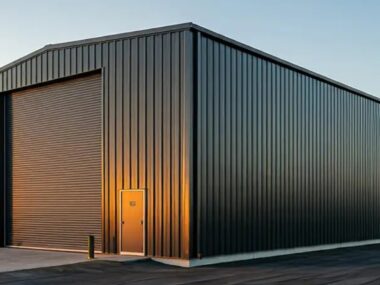Determining the correct size for an HVAC (Heating, Ventilation, and Air Conditioning) unit is a critical task that homeowners and professionals face when looking to either replace an existing system or install a new one. The importance of proper HVAC sizing cannot be overstated; it is essential for keeping a home comfortable, ensuring energy efficiency, and prolonging the lifespan of the unit.
HVAC sizing is the process of calculating the amount of heating and cooling power needed to maintain a comfortable indoor environment in a building. This process involves more than just considering the square footage of the space. It requires a comprehensive understanding of various elements such as the home’s layout, insulation levels, window sizes and locations, orientation relative to the sun, climate zone, and other factors that affect the temperature and airflow within living spaces.
Sizing an HVAC unit correctly is not a simple guesswork; it can have far-reaching implications. An HVAC system that is too small will struggle to maintain comfortable temperatures, particularly during extreme weather, and may wear out more quickly due to constant operation. On the other hand, an oversized unit can lead to frequent cycling on and off, which reduces efficiency, fails to properly dehumidify the air, and can similarly lead to premature breakdowns.
With energy costs and sustainability concerns on the rise, homeowners are increasingly seeking HVAC solutions that optimize comfort while minimizing energy consumption. In this context, understanding the right approach to HVAC sizing becomes a foundational step towards achieving an energy-efficient home that is comfortable year-round.
Understanding Your Home’s Heating and Cooling Needs
Gauging the appropriate size for an HVAC unit is crucial and begins with understanding your home’s specific heating and cooling demands. These requirements are influenced by a multitude of factors that vary from one residence to another. The primary consideration is the square footage of your space, as larger areas generally require more powerful units to maintain a comfortable temperature effectively.
However, the square footage tells only part of the story. The climate in your region plays a significant role; hotter or colder climates necessitate HVAC systems with greater capacity to cope with extreme temperatures. Insulation quality directly impacts how well your home retains heat during winter or keeps cool air in during summer, affecting the load on the HVAC system. Well-insulated homes may require smaller units, as they can maintain the desired temperature more efficiently.
Other factors to consider include the number of windows, which can lead to heat gain or loss, the height of your ceilings, and the layout of your home. Rooms with vaulted ceilings contain more air that needs heating or cooling, which can change the calculation. Similarly, an open plan house might circulate air differently compared to a compartmentalized layout, affecting the distribution of temperature.
Lastly, heat-generating appliances, the presence of a basement or attic, and even the number of occupants can influence the demand for heating and cooling. Every additional person or appliance adds to the load your HVAC system must handle. Understanding these nuances helps ensure you choose a unit that aligns with your unique home environment and your family’s comfort needs.
Calculating the Right Size HVAC for Your Space
Determining the ideal size HVAC unit for your home requires a careful calculation, typically based on the Manual J load calculation procedure developed by the Air Conditioning Contractors of America (ACCA). This calculation encompasses various factors like square footage, regional climate, insulation levels, window type and size, home orientation, as well as the number of occupants.
To begin, you’ll measure the square footage of the space to be heated or cooled. However, square footage alone isn’t enough; for instance, a well-insulated 1,500 square-foot home in a mild climate will require a smaller HVAC system than a poorly insulated home of the same size in an area with extreme temperatures.
Several online calculators can provide you with an estimate, but for the most accurate measurement, it’s recommended to consult a professional. They will assess your home’s unique characteristics, including ceiling heights, the presence of heat-producing appliances, and even the impact of your home’s layout on airflow.
Once all factors have been considered, the professional will provide you with a British Thermal Unit (BTU) rating which indicates the amount of energy needed to heat or cool your home. As a rough estimate, it’s generally about 20 BTUs per square foot of living space. However, relying on a professional ensures that peculiarities like a sun-soaked living room or a shaded bedroom are factored into the final recommendation, providing you with an HVAC system that is tailor-made to your home’s specifications, ensuring optimal comfort and energy efficiency.
Factors Influencing HVAC Unit Size Selection
Selecting the appropriate size for an HVAC unit is crucial to ensure optimal comfort, efficiency, and longevity of the system. Several factors play a pivotal role in determining the right HVAC unit size for a home:
1. Square Footage: The size of your home is the primary factor that will influence the HVAC system size. A unit’s capacity is often measured in British Thermal Units (BTUs) for heating and in tons for cooling; the rule of thumb is you’ll need approximately 20 BTUs for each square foot of living space.
2. Climate: The geographic location of your house affects how hard the HVAC system will need to work. Homes in hotter, more humid climates will require more cooling capacity, whereas those in colder climates need adequate heating.
3. Insulation Quality: Good insulation keeps your home temperate by retaining heat during the winter and keeping heat out during the summer. Better-insulated homes may require smaller HVAC systems because less heat is lost or gained.
4. Home Layout: The number of rooms, layout, and ceiling height all affect HVAC sizing. Open floor plans may require a different approach compared to homes with many small rooms.
5. Windows: The size, quality, and quantity of windows can affect how much heat is gained or lost. Energy-efficient windows can reduce the HVAC load.
6. Occupancy and Lifestyle: More occupants generally mean a higher HVAC load. Additionally, personal preferences for temperature and the amount of heat generated from appliances can impact the size required.
7. Ductwork: Properly designed and sealed ductwork can significantly impact the efficiency of the HVAC system. Leaky or poorly designed ducts can result in the need for a larger unit to compensate for the loss of efficiency.
Considering these factors helps in selecting an HVAC unit that is neither too large (leading to inefficiency and increased costs) nor too small (resulting in inadequate cooling/heating and overworking the system). A correctly sized HVAC system will operate efficiently, keep your home comfortable throughout the year, and have a longer lifespan.
Common Mistakes to Avoid in HVAC Sizing
Proper sizing of an HVAC system is crucial for achieving optimal comfort and energy efficiency in your home. However, many homeowners make several common mistakes during the HVAC sizing process that can lead to discomfort, high energy bills, and a shortened lifespan for the unit. Here are some critical errors to avoid:
1. Equating Size with Performance: Bigger is not always better. A unit that’s too large will cycle on and off frequently, leading to poor humidity control, uneven temperature distribution, and increased wear and tear. Conversely, a unit that’s too small will struggle to meet the heating and cooling demands, running continuously and driving up energy costs.
2. Ignoring Home Insulation: The level of insulation in your home affects the heating and cooling load. Overlooking this when sizing your HVAC system can result in an incorrect calculation of your needs. Ensure that the insulation, including that in walls and attics, is taken into account.
3. Disregarding Ductwork: The condition and design of your home’s ductwork greatly influence the efficiency of air distribution. Leaky or poorly designed ducts can cause a significant loss of energy, making even a well-sized HVAC system appear insufficient.
4. Not Consulting Professionals: While DIY can be tempting, HVAC sizing is complex and requires professional expertise. Experts use detailed calculations such as Manual J load calculations to determine the precise size needed for your specific space.
5. Following a Rule of Thumb: Although rules of thumb, like allotting a certain number of BTUs per square foot, are easy, they’re not accurate for every situation. Each home is unique, and factors such as ceiling heights, window sizes, and local climate should be considered.
By avoiding these mistakes, homeowners can ensure they choose an HVAC system that’s as efficient and effective as possible, translating into increased comfort, better air quality, and lower utility bills.
Conclusion: Ensuring Optimal Comfort and Efficiency
When it comes to HVAC systems, finding the right balance between comfort and energy efficiency is paramount. An appropriately sized HVAC unit is the linchpin in this delicate balance. Oversized units lead to frequent cycling on and off, causing unnecessary strain on the system, heightened energy consumption, and uneven temperatures. Conversely, an undersized unit will fall short, running incessantly to meet the demands of the space and potentially leaving you with higher bills and a less comfortable environment.
To ensure optimal comfort and efficiency, it’s imperative to base your HVAC size selection on precise calculations and thorough consideration of all the factors that impact your home’s heating and cooling requirements. This includes not only square footage but also climate, insulation levels, window size and orientation, and household occupancy. Engaging with a professional HVAC contractor who can provide an accurate load calculation according to the Manual J methodology stands as a worthwhile investment. This evaluation ensures that the final decision is made with all variables in mind, guaranteeing a tailored solution for your specific needs.
By avoiding the common pitfalls in HVAC sizing and adhering to informed guidelines, you position yourself to achieve a living space that maintains consistent temperatures, ensures air quality, and operates at peak energy efficiency. The result is a comfortable home year-round, reasonable utility bills, and the peace of mind that comes from knowing your HVAC system is running as intended. Ultimately, the effort put into correctly sizing your HVAC system pays dividends in both home comfort and long-term cost savings.








